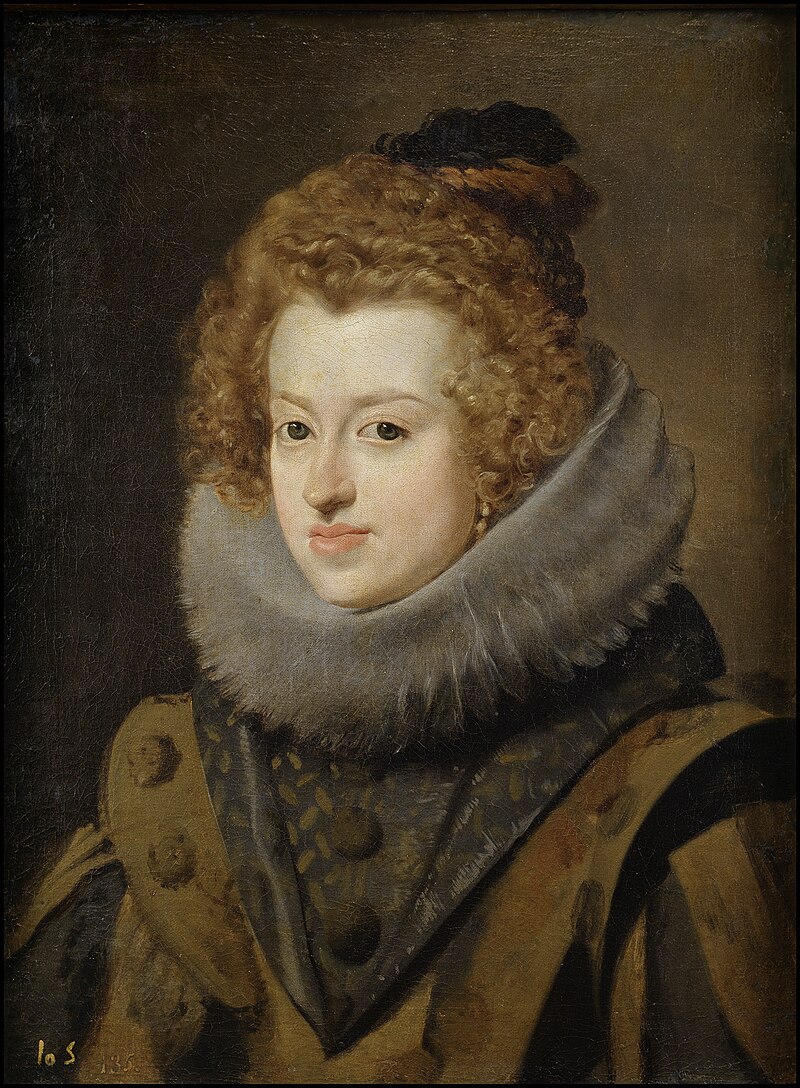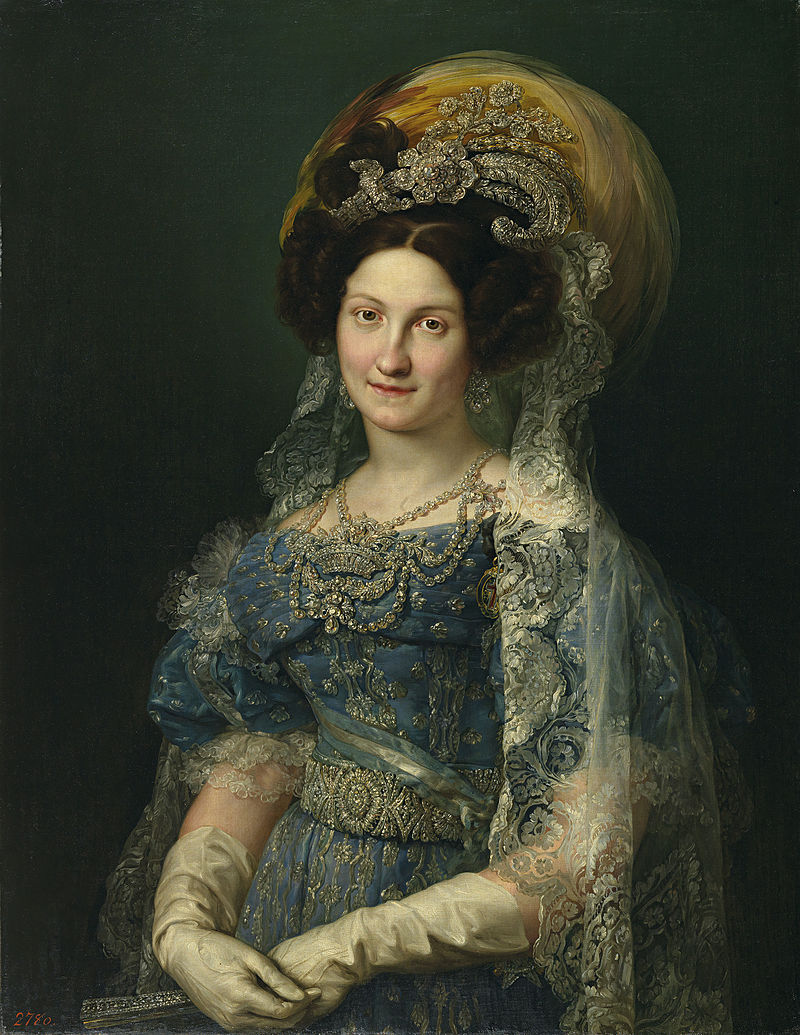© Unofficial Royalty 2023

King Ludwig I of Bavaria; Credit – Wikipedia
August 25, 1160 – Death of Gervase of Blois, Abbot of Westminster, illegitimate son of King Stephen of England; buried in the south cloister of the old Westminster Abbey in London, England
Unofficial Royalty: Gervase of Blois, Abbot of Westminster, illegitimate son of King Stephen of England (article coming soon)
August 25, 1482 – Death of Margaret of Anjou, Queen of England, wife of King Henry VI of England, at Château de Dampiere in Anjou, France, buried at St. Maurice’s Cathedral in Angers, France
In 1445, Margaret married King Henry VI of England and had one son Edward of Westminster, Prince of Wales. Margaret was one of the principal players in the Wars of the Roses, the battle for the English crown between the House of Lancaster and the House of York. Her son was killed at the Battle of Tewkesbury where Margaret led the Lancastrian forces. Her husband was sent to the Tower of London and where he died, probably murdered on orders from King Edward IV from the House of York. Margaret was imprisoned at Wallingford Castle in England while her father René, Duke of Anjou worked tirelessly to arrange his daughter’s release. In 1475, King Louis XI agreed to pay Margaret’s ransom provided that her father would cede to France his territories of Anjou, Bar, Lorraine, and Provence. Margaret returned to France and died Margaret died on August 25, 1482, at the age of 53.
Unofficial Royalty: Margaret of Anjou, Queen of England
August 25, 1699 – Death of King Christian V of Denmark and Norway in Copenhagen, Denmark after a hunting accident; buried at Roskilde Cathedral in Roskilde, Denmark
Christian V died from the after-effects of a hunting accident that occurred on October 19, 1698. Christian was hunting with his two surviving sons and his half-brother. While they were taking a break, they received the news that the hunting dogs had exhausted and surrounded a deer. Christian immediately left to give the deer the death blow. Instead, he missed and the deer kicked him. The injuries were severe and Christian never recovered,
Unofficial Royalty: King Christian V of Denmark and Norway
August 25, 1707 – Birth of King Luis I of Spain at Buen Retiro Palace in Madrid, Spain
After the abdication of his father, Luis I, King of Spain had a very short reign, from January 14, 1724 to August 31, 1724. In 1722, Luis married Princess Louise Élisabeth of Orléans. The marriage was not successful and resulted in no children due to the young age of Louise Élisabeth and because she became increasingly known for her erratic and impulsive behavior. On January 14, 1724, Luis’s father King Felipe V abdicated the Spanish throne in favor of Luis for reasons that are still unclear. Perhaps it was because Felipe suffered from mental instability and did not wish to reign due to his increasing mental decline. King Luis I contracted smallpox in July 1724. His wife Louise Élisabeth was his only company because his parents, fearful of the illness, left the Palacio del Buen Retiro in Madrid, Spain. Luis’s smallpox was complicated by pneumonia. Fourteen-year-old Louise Élisabeth cared for and remained with her seventeen-year-old husband until his death, on August 31, 1724. She also contracted smallpox but recovered from the illness.
Unofficial Royalty: King Luis I of Spain
August 25, 1786 – Birth of King Ludwig I of Bavaria at the Hôtel des Deux-Ponts in Strasbourg, France
Full name: Ludwig Karl August
In 1810, Ludwig married Princess Therese of Saxe-Hildburghausen. The wedding took place in a large outdoor space called the Theresienwiese, in Munich. Named for his bride, Theresienwiese is the site of Oktoberfest, held every year to commemorate the wedding. Ludwig became King of Bavaria upon his father’s death in 1825. However, by 1848, Ludwig’s reign was coming to an abrupt end. Facing protests and demonstrations by students and the middle classes, the King had ordered the closure of the university. Shortly after, the crowds raided the armory on their way to storm the Munich Residenz. Ludwig’s brother, Karl, managed to appease the protesters, but the damage was done. The King’s family and advisors turned against him, and he was forced to sign the March Proclamation, giving substantial concessions toward a constitutional monarchy. Unwilling to rule this way, King Ludwig I abdicated on March 20, 1848. Ludwig spent the rest of his life in Bavaria, devoting his time to supporting and fostering the arts. He published several books of poems during his reign, as well as several translations of plays. On February 29, 1868, Ludwig died in Nice, France, aged 81, having survived his wife and five of his children.
Unofficial Royalty: King Ludwig I of Bavaria
Unofficial Royalty: Oktoberfest’s Royal Connection
August 25, 1805 – Death of Prince William Henry of Wales, Duke of Gloucester and Edinburgh, son of Frederick, Prince of Wales and brother of King George III, at Gloucester House on Upper Grosvenor Street in London, England; buried in the Gloucester Vault at St. George’s Chapel at Windsor Castle in Windsor, England
William Henry was one of the two brothers of King George III whose marriages caused the passing of the Royal Marriages Act in 1772. The act stipulated that no descendant of King George II under the age of 25, with the exception of descendants of princesses who married into foreign families, could marry without obtaining the consent of the sovereign. Over the age of 25, those wishing to marry without obtaining consent needed to inform the Privy Council of their intention. They would then be free to marry in a year if no objection had been raised by Parliament. In 1766, William Henry married Maria Waldegrave, Countess Waldegrave, née Walpole. William Henry and Maria’s marriage was held in secret as William Henry’s marriage to a widow of non-royal rank and illegitimate birth would not have been acceptable. King George III was unaware of this marriage until 1772. The Royal Marriages Act was repealed on March 26, 2015, as a result of the 2011 Perth Agreement. The Royal Marriages Act’s provisions were replaced by less limited restrictions that apply only to the first six people in the line of succession to the British throne.
Unofficial Royalty: Prince William Henry of Wales, Duke of Gloucester and Edinburgh
August 25, 1845 – Birth of King Ludwig II of Bavaria in Nymphenburg Palace in Munich, Kingdom of Bavaria, now in Bavaria, Germany
Full name: Ludwig Otto Friedrich Wilhelm
Ludwig was just 18 years old when he became king upon his father’s death. He continued with his father’s policies and retained his ministers, but his interests were not in ruling the country. His interests lay almost solely in the arts and he is probably best known for his love of architecture. Using his personal funds, he built several magnificent palaces and castles, the most famous being Neuschwanstein Castle. By 1885, the king was millions of marks in debt due to his spending on his castles and palaces and had all but withdrawn from his duties as King. Several of his ministers began trying to find grounds to depose him, believing him to be mentally ill. Ultimately, Ludwig II had a mysterious end. On June 13, 1886, Ludwig went for a walk on the grounds of the castle, accompanied by Dr. von Gudden, his doctor, and several attendants. They went out again that evening, this time without servants, but never returned. Several hours later, King Ludwig II’s body was found in the water of Lake Starnberg, along with that of Dr. von Gudden. His death remains a mystery. It was ruled a suicide by drowning, but no water was found in his lungs during an autopsy. One belief is that Ludwig II was murdered while trying to escape; another is that he died of natural causes, possibly due to the extremely cold temperature of the water.
Unofficial Royalty: King Ludwig II of Bavaria
August 25, 1862 – Death of Mathilde of Bavaria, Grand Duchess of Hesse and by Rhine, wife of Ludwig III, Grand Duke of Hesse and by Rhine, in Darmstadt, Grand Duchy of Hesse and by Rhine, now in Hesse, Germany; buried at St. Ludwig’s Catholic Church in Darmstadt
Mathilde Karoline married the future Grand Duke Ludwig II of Hesse and by Rhine. They had no children. She became Grand Duchess upon her husband’s accession in 1848. She died of cancer at the age of 48. Because Mathilde Karoline had remained Catholic after her marriage into the Grand Ducal family who was Lutheran, she is buried at St. Ludwig’s Catholic Church in Darmstadt.
Unofficial Royalty: Mathilde of Bavaria, Grand Duchess of Hesse and by Rhine
August 25, 1942 – Death of Prince George, Duke of Kent, son of King George V of the United Kingdom and brother of King George VI of the United Kingdom, when a military plane taking him to Iceland, crashed in Scotland, buried at the Royal Burial Ground, Frogmore in Windsor, England
Prince George, Duke of Kent was the father of Queen Elizabeth II’s first cousins Prince Edward, Duke of Kent, Princess Alexandra of Kent, and Prince Michael of Kent. On August 25, 1942, just six weeks after the birth of his youngest child, George boarded a Royal Air Force plane in Scotland, headed for Iceland. The plane crashed near Dunbeath, Caithness in Scotland, killing all except for one person aboard. There is much speculation as to the nature of this trip. While officially it was a standard visit to troops in Iceland, there are allegations and suggestions that it was some sort of “secret mission”. The Duke’s body was found with a briefcase handcuffed to his wrist, full of 100 kroner notes. These had no value in Iceland at the time.
Unofficial Royalty: Prince George, Duke of Kent
Unofficial Royalty: Tragedy in the British Royal Family at the End of August
August 25, 2001 – Wedding of Crown Prince Haakon of Norway and Mette-Marit Tjessem Høiby at Oslo Cathedral in Oslo, Norway
Crown Prince Haakon and Mette-Marit first met in the mid-1990s at a garden party during the Quart Festival, Norway’s largest music festival, in her hometown of Kristiansand. The two met at the Quart Festival again in 1999 and began a relationship. On December 1, 2000, the couple’s engagement was announced, but it was not without controversy. Mette-Marit was a commoner, had a child born out of wedlock, and was surrounded by rumors of a party-girl past and alleged drug use. The couple was also living together which did not sit well with the Church of Norway. Surveys at that time reported that most Norwegians did not mind the couple had lived together or that she was a single mother. However, public support for the monarchy suffered as the details emerged about Mette-Marit’s drug past and there were calls for Haakon to relinquish his place in succession if he chose to marry Mette-Marit. The couple did, however, have the support of the King and Queen, and after a series of public interviews, they also regained the support of the Norwegian people.
Unofficial Royalty: Wedding of Crown Prince Haakon of Norway and Mette-Marit Tjessem Høiby
This article is the intellectual property of Unofficial Royalty and is NOT TO BE COPIED, EDITED, OR POSTED IN ANY FORM ON ANOTHER WEBSITE under any circumstances. It is permissible to use a link that directs to Unofficial Royalty.













